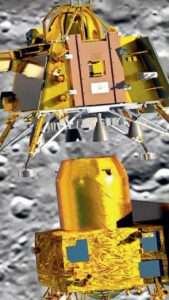The Chandrayaan-3 mission is set to benefit from the advanced hazard detection system developed by the Space Applications Centre (SAC). This innovative system is designed to play a pivotal role in ensuring a successful and safe landing for the lunar mission.

Ensuring a Soft and Accurate Landing:
The hazard detection system developed by SAC is geared towards facilitating a precise and soft landing for Chandrayaan-3 on the lunar surface. Landing a spacecraft on the moon’s uneven and challenging terrain demands highly sophisticated technology that can identify potential hazards and guide the landing module accordingly.
Cutting-Edge Technology for Enhanced Safety:
SAC’s hazard detection system is equipped with state-of-the-art sensors and imaging technology that allow it to identify obstacles, rough patches, and other potential dangers on the lunar surface. This real-time data is crucial for the spacecraft’s autonomous systems to make informed decisions and adjust its trajectory to avoid hazardous areas.
A Complex and Critical Process:
The process of making a soft landing on the moon is incredibly complex and requires precision down to the millimeter. The hazard detection system’s ability to provide accurate and timely information during the descent phase significantly enhances the chances of a successful landing, preventing potential damage to the spacecraft.
Contributing to India’s Lunar Exploration:
Chandrayaan-3, the third lunar exploration mission by the Indian Space Research Organisation (ISRO), aims to build upon the successes of its predecessors. The utilization of SAC’s hazard detection system underscores ISRO’s commitment to continuous improvement and innovation in its space missions.
Collaborative Efforts for Mission Success:
The development of the hazard detection system is a result of collaborative efforts among various ISRO centers and organizations. The integration of advanced technology, scientific expertise, and engineering excellence has culminated in a cutting-edge system that addresses the unique challenges of lunar landings.

A key part of the Chandrayaan-3 mission is the hazard detection and avoidance system (HDAS) developed by the Space Applications Centre (SAC) of ISRO. The HDAS will use four cameras to scan the lunar surface for hazards such as craters, boulders, and slopes. The data from these cameras will be processed in real time to help the lander make a soft landing.

As Chandrayaan-3 embarks on its mission to explore the moon’s surface, the role of SAC’s hazard detection system cannot be overstated. This technology promises to significantly enhance the mission’s safety and success by providing vital information to guide the spacecraft’s descent. With this advanced system at its disposal, ISRO is poised to achieve another milestone in its ambitious space exploration journey.
